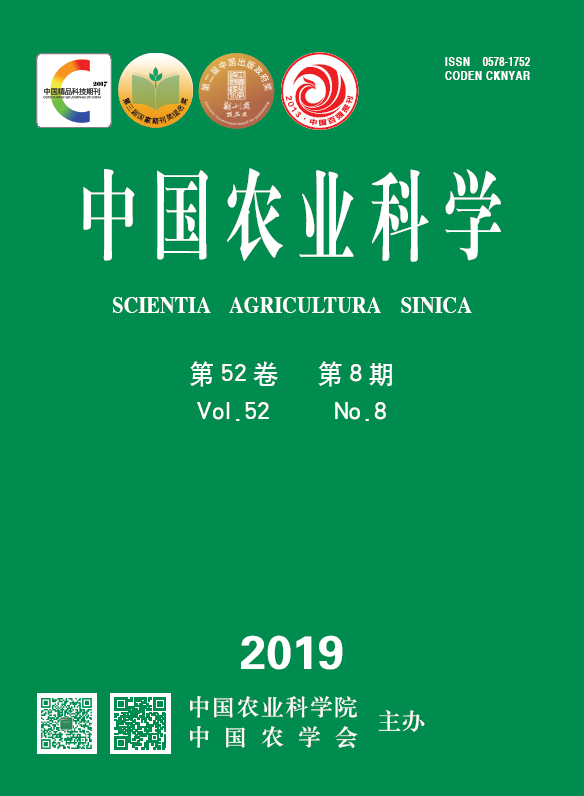【Objective】The objective of this paper was to explore the emission characteristics and warming potential of the greenhouse gases N2O, CO2 and CH4 from table grape vineyard soils under different water and nitrogen regulation, and to understand the contribution of water and nitrogen regulation to greenhouse gas emissions, thus screening out a more reasonable management model of water and nitrogen regulation, so as to provide scientific basis and technical reference for reducing greenhouse gas emissions from vineyards and promoting grape industry sustainable production. 【Method】From April 2017 to December 2017, Changli, the main grape producing area in Hebei Province, was selected as the experimental site and the table grape “Red globe” was used as the tested grape variety. A field microplot experiment was employed with four treatments, including traditional water and nitrogen, mobile water and fertilizer, optimized water and nitrogen, as well as optimized water and nitrogen + DMPP. The greenhouse gas emissions (N2O, CO2 and CH4) from the vineyard soil were monitored by using closed static chamber-gas chromatography, and then their comprehensive warming potential differences were compared. Final, the grape yields were measured. 【Result】N2O emission flux showed a single peak trend after fertilization, and the peak appeared on the 1-2 day after fertilization. Nitrogen fertilizer could significantly increase soil N2O emission flux. Compared with the traditional water and nitrogen treatment, nitrogen reduction and water control treatments could reduce the average N2O emission flux by 73.03%-88.19%, and their difference was significant (P<0.05). Optimized water and nitrogen + DMPP treatment could reduce the N2O emission flux by 50.08% on average under the condition of equal nitrogen, and the trend of CO2 emission flux was the same in all treatments, reaching the peak 2-3 days after fertilization, showing seasonal variation in the growth period. Nitrogen reduction and water control treatments could reduce CO2 emissions by 60.56%-62.13%. CH4 emission flux had no obvious change trend, but CH4 emission flux was positive or negative after fertilization. The traditional CH4 emission flux fluctuated greatly, ranging from -0.132 to 0.238 μg·m -2·h -1. There was no significant difference between nitrogen reduction and water control treatments (P>0.05). During the whole experiment period, the total N2O emissions of the treatments were in the order of traditional water and nitrogen, optimized water and nitrogen, mobile water and fertilizer and optimized water and nitrogen+DMPP, which were 3.90, 2.83, 2.76 and 2.65 kg·hm -2 with the emission coefficients were 0.58%-0.67%, respectively. Comparing with traditional water and nitrogen treatment, the nitrogen reduction and water control treatments (mobile water and fertilizer, optimized water and nitrogen and optimized water and nitrogen+DMPP ) could reduce the total N2O emissions by 27.56%-32.09%. The cumulative emissions of CO2 and CH4 were 3 816.05 kg·hm -2and 0.060 g·hm -2 in traditional water and nitrogen treatment, 3 387.33 kg·hm -2and -0.075 g·hm -2 in mobile water and fertilizer treatment, 3 410.95 kg·hm -2and -0.036 g·hm -2 in optimized water and nitrogen treatment, and 3 412.06 kg·hm -2 and -0.030 g·hm -2 in optimized water and nitrogen +DMPP treatment, respectively. Nitrogen reduction and water treatments could reduce the total cumulative CO2 emissions by 10.59%-11.23% and CH4 emissions by 150.23%-224.38%, respectively. Combining with the grape yield, the grape yield in nitrogen reduction and water control treatments was increased by 8.81% to 19.35% compared with traditional water-nitrogen treatment, and the largest increase was found under the optimized water and nitrogen + DMPP treatment, which was 9.69% and 2.25% higher than that under optimized water and nitrogen and mobile water and fertilizer treatment.【Conclusion】 Compared with the traditional water and nitrogen treatment, the cumulative emission of N2O, CO2 and CH4 in soils treated with optimized water and nitrogen + DMPP was decreased by 32.09%, 10.59% and 150.23%, respectively, and the total GWP was decreased by 12.82%, achieving greenhouse gas emission reduction in vineyards; at the same time, it could increase the grape yield by 19.35%, achieving a win-win situation for both economy and environment, which was evaluated as the best water and fertilizer regulation measures in this study.









